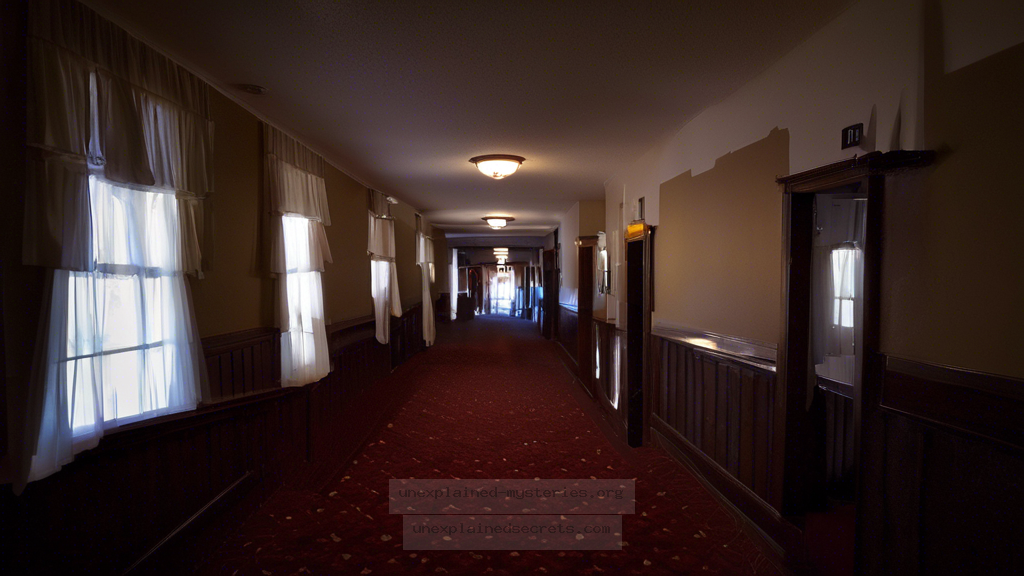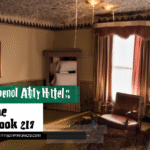What Secrets Lurk in the Shadows of the Stanley Hotel’s Haunted Halls?
What Secrets Lurk in the Shadows of the Stanley Hotel’s Haunted Halls?
The Stanley Hotel, located in Estes Park, Colorado, is not only renowned for its stunning views and luxurious accommodations but also for its chilling reputation as one of the most haunted locations in the United States. This question is significant because the stories surrounding the hotel intertwine history, folklore, and personal experiences, making the Stanley a focal point for paranormal enthusiasts. Visitors and researchers alike are drawn to its corridors, fascinated by the potential for encounters with the supernatural. In this exploration, we will delve into the historical background, documented hauntings, core theories on the paranormal, and the implications of ghostly encounters at the Stanley Hotel.
Historical Context of the Stanley Hotel
Opened in 1909 by Freelan Oscar Stanley, co-founder of the Stanley Motor Carriage Company, the hotel was designed as a luxury resort for the wealthy elite. Its picturesque setting and architectural grandeur quickly made it a popular destination. However, the hotel’s significance extends beyond its initial purpose; it has become a canvas for ghost stories and paranormal experiences, particularly after Stephen King stayed there in 1974, which inspired his novel “The Shining.” The combination of the hotel’s rich history and its eerie reputation creates a backdrop ripe for exploration.
Core Concepts of Haunted Locations
Haunted locations like the Stanley Hotel often become the subject of various theories regarding what constitutes a haunting. These can range from residual hauntings—where echoes of past events replay in a location—to intelligent hauntings, where spirits interact with the living. Other concepts include poltergeist activity, which involves physical disturbances caused by spirits, and even the theory of ley lines, suggesting that certain geographical alignments may enhance spiritual energy. Understanding these theories can provide a framework for interpreting the experiences reported at the Stanley Hotel.
Documented Hauntings at the Stanley Hotel
One of the most famous hauntings at the Stanley Hotel involves F.O. Stanley himself. Guests have reported seeing his apparition in the hotel’s lobby, dressed in a period suit and engaging in friendly conversation. Another notable spirit is that of a woman named Elizabeth Wilson, who served as the hotel’s housekeeper. She is often spotted in room 217, where she reportedly once had an accident that left her in a coma. Her spirit is known to make the beds and move personal belongings around the room, leading many to believe she watches over guests. Moreover, the hotel’s ballroom has been reported to host ghostly gatherings, with the sounds of laughter and music echoing from an unseen source.
| Spirit | Reported Activity |
|---|---|
| F.O. Stanley | Seen in the lobby, conversing with guests |
| Elizabeth Wilson | Moving belongings and making beds in room 217 |
| Ballroom Spirits | Sounds of laughter and music from nowhere |
Core Theories on Paranormal Activity
The phenomena observed at the Stanley Hotel can often be linked to several theories about paranormal activity. One prevailing theory is that residual energy from traumatic or significant events can leave an imprint on the environment, causing echoes of the past to manifest as ghostly encounters. This theory could explain why certain areas of the hotel, like room 217 and the ballroom, are hotspots for activity. Another theory suggests that emotional energy, particularly strong feelings of love or grief, can attract spirits to particular locations, making them more likely to interact with the living. This interplay between emotional energy and spirit activity is a fundamental concept in the study of hauntings.
Practical Implications of Ghostly Encounters
The experiences at the Stanley Hotel not only provide thrilling stories for guests but also pose questions about the implications of engaging with the paranormal. For some, encounters with spirits can lead to profound personal insights or a sense of closure regarding loss. However, there are also potential risks associated with exploring haunted locations, including psychological distress or the possibility of attracting negative energies. It is crucial to approach such experiences with an open mind while maintaining a sense of caution and respect for the unknown.
Alternative Perspectives on Hauntings
While many embrace the idea of haunted locations, there are alternative perspectives that challenge the existence of spirits. Skeptics often argue that reported experiences can be attributed to psychological factors, such as suggestibility, pareidolia (the tendency to perceive familiar patterns, such as faces, in random stimuli), and environmental influences like electromagnetic fields. In the case of the Stanley Hotel, some believe that the atmosphere created by its historical significance and the influence of popular culture may lead to heightened expectations and experiences among guests. This skepticism invites a critical examination of both personal accounts and the broader implications of belief in the paranormal.
Common Misconceptions about Haunted Locations
Despite the wealth of information available, several misconceptions persist regarding haunted locations. One common myth is that all hauntings are malevolent in nature. In reality, many reported encounters are benign or even friendly, as seen in the case of F.O. Stanley and Elizabeth Wilson. Another misconception is that only old, dilapidated buildings can be haunted. In fact, many newer establishments, including the Stanley Hotel, have reported paranormal activity, suggesting that hauntings are not strictly tied to age. Understanding these misconceptions can help create a more nuanced view of what it means to experience a haunted location.
Best Practices for Investigating Haunted Locations
For those interested in exploring haunted locations like the Stanley Hotel, following best practices can enhance the experience while ensuring safety and respect for the site. First, thorough research is crucial; understanding the historical context and reported hauntings can inform expectations and experiences. Second, approaching investigations with an open yet critical mind allows for a balance between belief and skepticism. Third, using appropriate equipment, such as EMF detectors and audio recorders, can help document experiences while providing a level of scientific inquiry. Lastly, always be respectful of the location and its history, as well as the experiences of others. This approach fosters a deeper understanding and appreciation for the mysteries that haunt us.
Future Developments in Paranormal Research
The field of paranormal research continues to evolve, particularly as technology advances. Innovations such as infrared cameras, thermal imaging, and enhanced audio recording devices are providing new avenues for investigation. Additionally, the integration of psychological studies into ghost research is gaining traction, helping to bridge the gap between personal experiences and scientific inquiry. As more researchers and enthusiasts explore haunted locations with a blend of traditional methods and modern technology, the potential for new discoveries in the realm of the paranormal grows. The Stanley Hotel, with its rich tapestry of stories and experiences, will undoubtedly remain a focal point for both current and future investigations.
Conclusion
The Stanley Hotel serves as a poignant reminder of the complex interplay between history, experience, and the unknown. Its reputation as a haunted location is built on a foundation of documented encounters, theoretical frameworks, and personal narratives that invite both fascination and scrutiny. As we continue to explore the depths of such mysteries, the stories of those who have walked its haunted halls offer insight into our collective curiosity about life, death, and what lies beyond. Whether viewed through the lens of belief or skepticism, the allure of the Stanley Hotel remains undeniable, inviting all who enter to question the very nature of reality and the spirits that may dwell within.
Other Articles
Recent Posts
- What Happened to Flight MH370? The Conspiracy Theories That Still Haunt Us
- What Secrets Lurk Within the Walls of the Infamous Trans-Allegheny Lunatic Asylum?
- What Evidence Supports the Existence of Bigfoot in the Pacific Northwest?
- What Happened to the Indus Valley Civilization? Unraveling the Mysteries of Ancient Urban Life
- Can Telepathy Be Scientifically Proven Through Laboratory Evidence?







